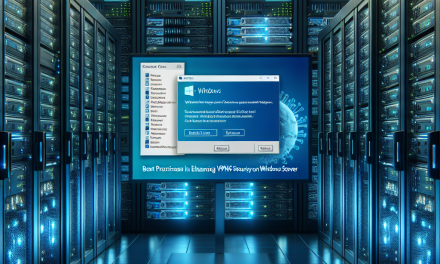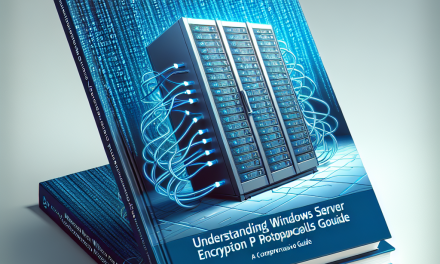In today’s interconnected digital landscape, organizations increasingly rely on diverse operating systems and platforms, making cross-platform security a critical concern. As Windows Server continues to serve as a backbone for enterprise applications and services, ensuring robust security measures in mixed environments is paramount. This article explores strategies for enhancing cross-platform security in Windows Server environments, aiming to equip IT professionals with the knowledge needed to safeguard their infrastructure.
Understanding Cross-Platform Challenges
Cross-platform environments typically involve multiple operating systems, cloud providers, and services that interact with Windows Server. Here are some common security challenges faced:
- Inconsistent Security Policies: Each operating system may have different security configurations and policies, leading to vulnerabilities.
- Interoperability Issues: Services across different platforms may have varying authentication mechanisms.
- Data Transmission Risks: Transferring data between systems can expose it to interception if not properly secured.
- Access Control: Managing user permissions across multiple platforms can complicate security governance.
1. Establish a Unified Security Policy
Creating a unified security policy is essential for maintaining consistent security measures across platforms. This policy should cover:
- Password Policies: Implement strong password requirements across all systems.
- Access Control: Standardize user roles and permissions, ensuring the principle of least privilege is adhered to.
- Incident Response: Develop a cohesive incident response strategy that encompasses all platforms.
2. Utilize Active Directory (AD) for Cross-Platform Identity Management
Windows Server’s Active Directory (AD) plays a crucial role in managing user identities. Here’s how to leverage it in cross-platform scenarios:
- Single Sign-On (SSO): Use AD to enable SSO capabilities across diverse environments, minimizing the number of credentials users must manage.
- Federation Services: Implement Windows AD Federation Services (AD FS) to facilitate secure access to cloud applications and other non-Windows systems.
- Identity Governance: Regularly review and audit user accounts to ensure compliance with security policies.
3. Implement Network Segmentation
Network segmentation enhances security by isolating different segments of the network from one another. Consider:
- Virtual LANs (VLANs): Create distinct VLANs for Windows and non-Windows systems to limit exposure.
- Firewalls: Utilize firewalls to restrict access between segmented networks, only allowing necessary traffic.
- VPNs: Use Virtual Private Networks to secure remote access to critical resources.
4. Encrypt Data at Rest and in Transit
Data breaches can severely impact an organization’s reputation and finances. Implement encryption protocols to safeguard data:
- At Rest: Use BitLocker to encrypt drives on Windows servers, ensuring data remains secure even if physical access is gained.
- In Transit: Utilize protocols like TLS (Transport Layer Security) and SSH (Secure Shell) to protect data while being transmitted across networks.
5. Employ Regular Patch Management
Regular updates and patches are crucial to protecting against vulnerabilities. Establish a patch management strategy that includes:
- Automated Updates: Enable automatic updates for Windows servers to ensure they receive the latest security patches.
- Third-Party Software: Regularly review and patch third-party applications and services running on Windows servers.
- Testing: Use test environments to validate patches before deployment to minimize disruptions.
6. Conduct Security Audits and Penetration Testing
Proactive security assessments help identify vulnerabilities within your environment:
- Regular Audits: Conduct regular security audits to assess compliance with your security policy and identify weaknesses.
- Penetration Testing: Simulate attacks on your systems to identify and remediate vulnerabilities before they can be exploited by attackers.
7. Monitor and Respond to Threats
Ongoing monitoring is vital for detecting and responding to threats in real time:
- Centralized Logging: Use a centralized logging solution to aggregate logs from Windows servers and other platforms for better visibility.
- Security Information and Event Management (SIEM): Implement a SIEM solution to analyze and respond to security incidents effectively.
Conclusion
Enhancing cross-platform security in Windows Server environments requires a holistic approach that encompasses unified policies, identity management, encryption, and ongoing monitoring. By adopting best practices and strategies outlined in this article, organizations can significantly reduce their security risks and ensure a safer interoperation of diverse systems. As the digital landscape evolves, maintaining vigilance and adapting to new threats will be critical in protecting valuable assets across platforms.
By prioritizing cross-platform security, organizations can not only safeguard their Windows Server environments but also ensure that they are prepared to adapt to the ever-changing landscape of technology and security threats.





